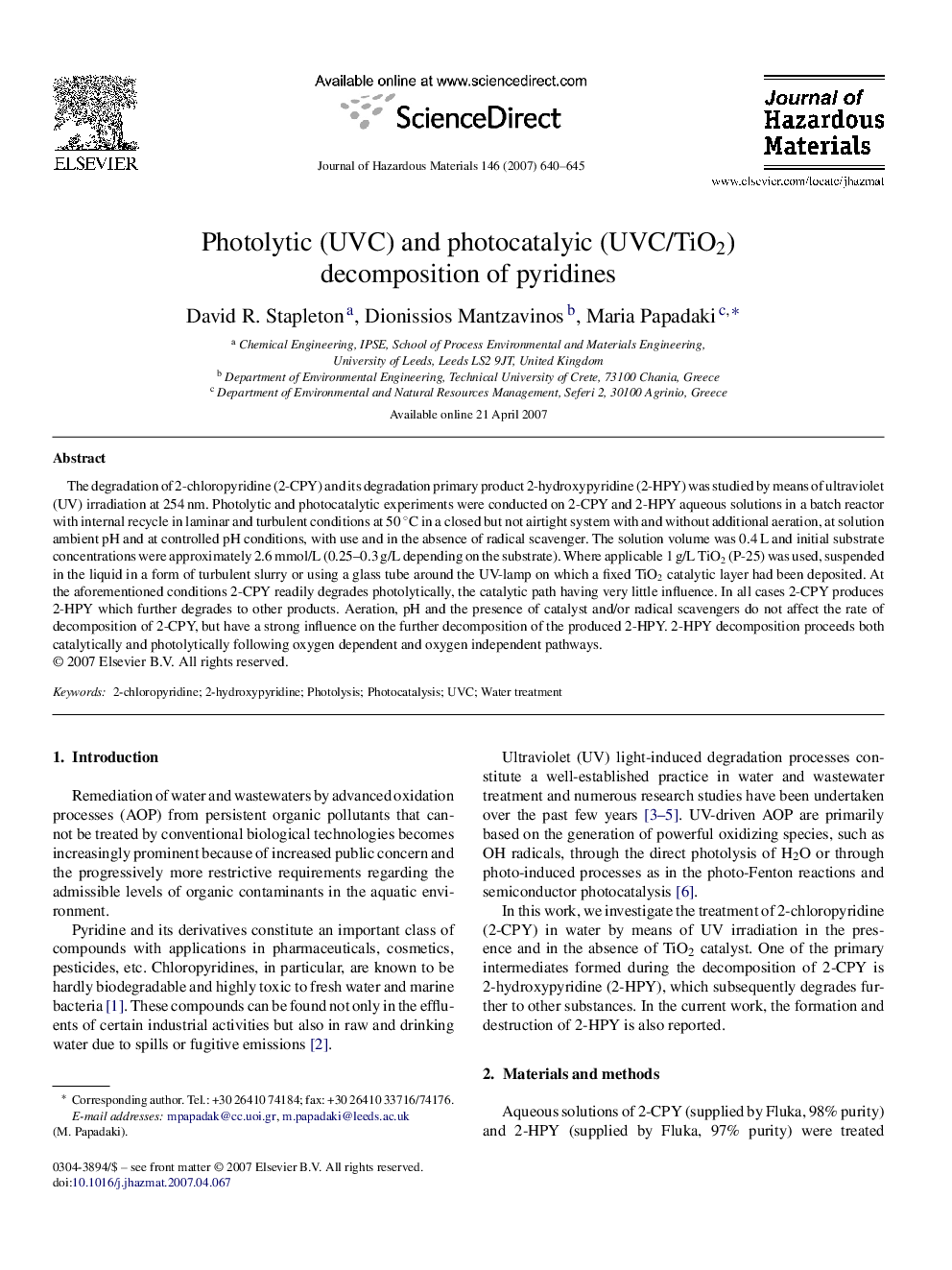| Article ID | Journal | Published Year | Pages | File Type |
|---|---|---|---|---|
| 584644 | Journal of Hazardous Materials | 2007 | 6 Pages |
Abstract
The degradation of 2-chloropyridine (2-CPY) and its degradation primary product 2-hydroxypyridine (2-HPY) was studied by means of ultraviolet (UV) irradiation at 254 nm. Photolytic and photocatalytic experiments were conducted on 2-CPY and 2-HPY aqueous solutions in a batch reactor with internal recycle in laminar and turbulent conditions at 50 °C in a closed but not airtight system with and without additional aeration, at solution ambient pH and at controlled pH conditions, with use and in the absence of radical scavenger. The solution volume was 0.4 L and initial substrate concentrations were approximately 2.6 mmol/L (0.25-0.3 g/L depending on the substrate). Where applicable 1 g/L TiO2 (P-25) was used, suspended in the liquid in a form of turbulent slurry or using a glass tube around the UV-lamp on which a fixed TiO2 catalytic layer had been deposited. At the aforementioned conditions 2-CPY readily degrades photolytically, the catalytic path having very little influence. In all cases 2-CPY produces 2-HPY which further degrades to other products. Aeration, pH and the presence of catalyst and/or radical scavengers do not affect the rate of decomposition of 2-CPY, but have a strong influence on the further decomposition of the produced 2-HPY. 2-HPY decomposition proceeds both catalytically and photolytically following oxygen dependent and oxygen independent pathways.
Related Topics
Physical Sciences and Engineering
Chemical Engineering
Chemical Health and Safety
Authors
David R. Stapleton, Dionissios Mantzavinos, Maria Papadaki,
